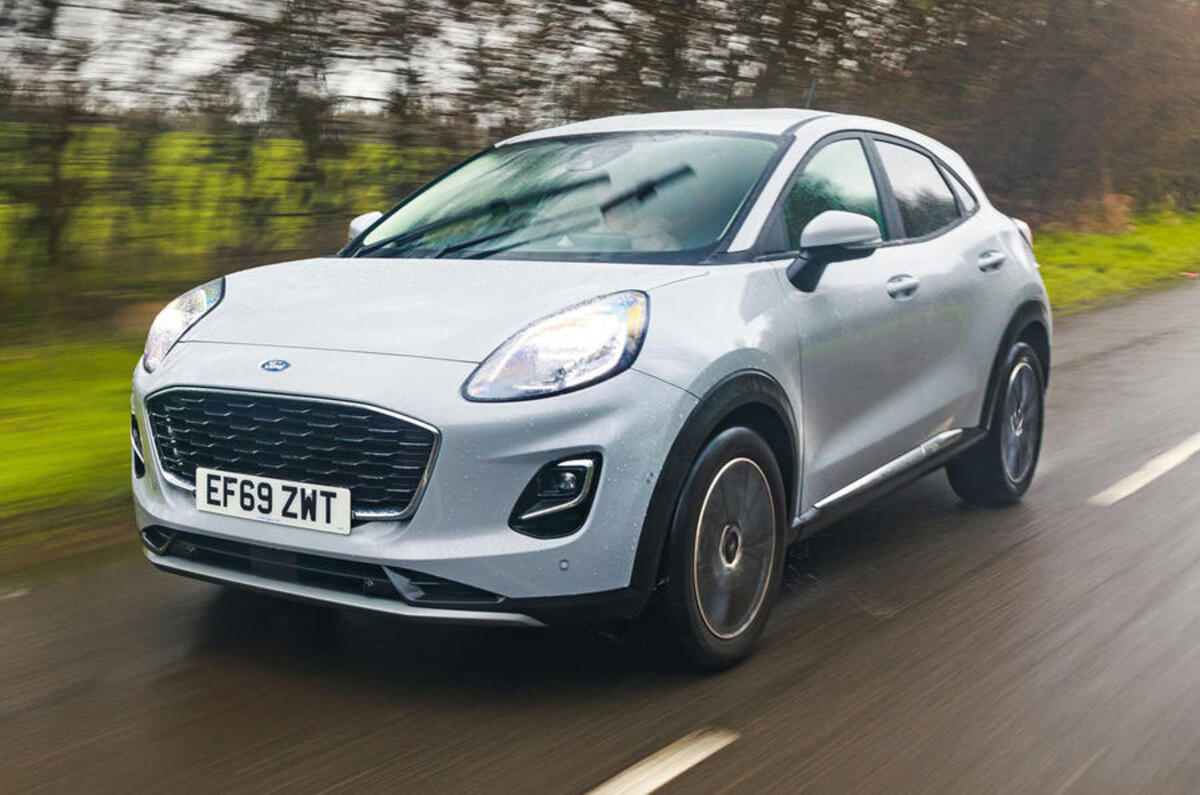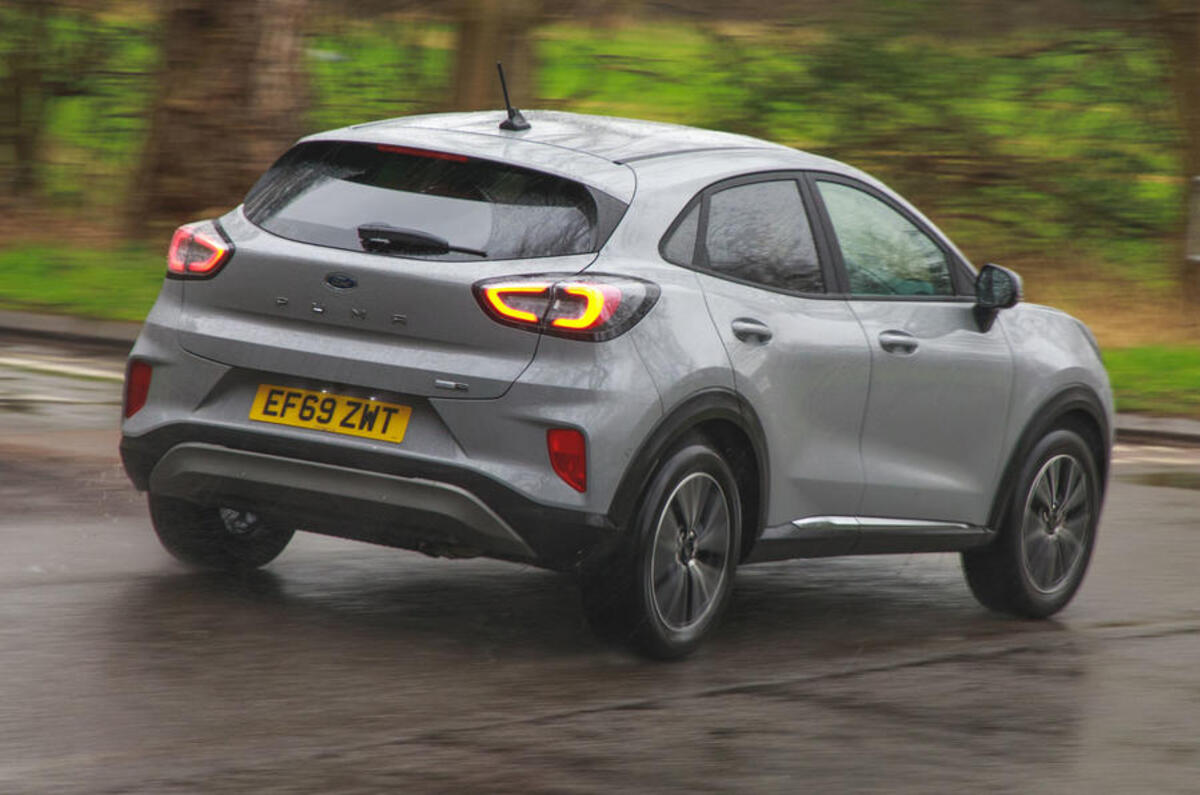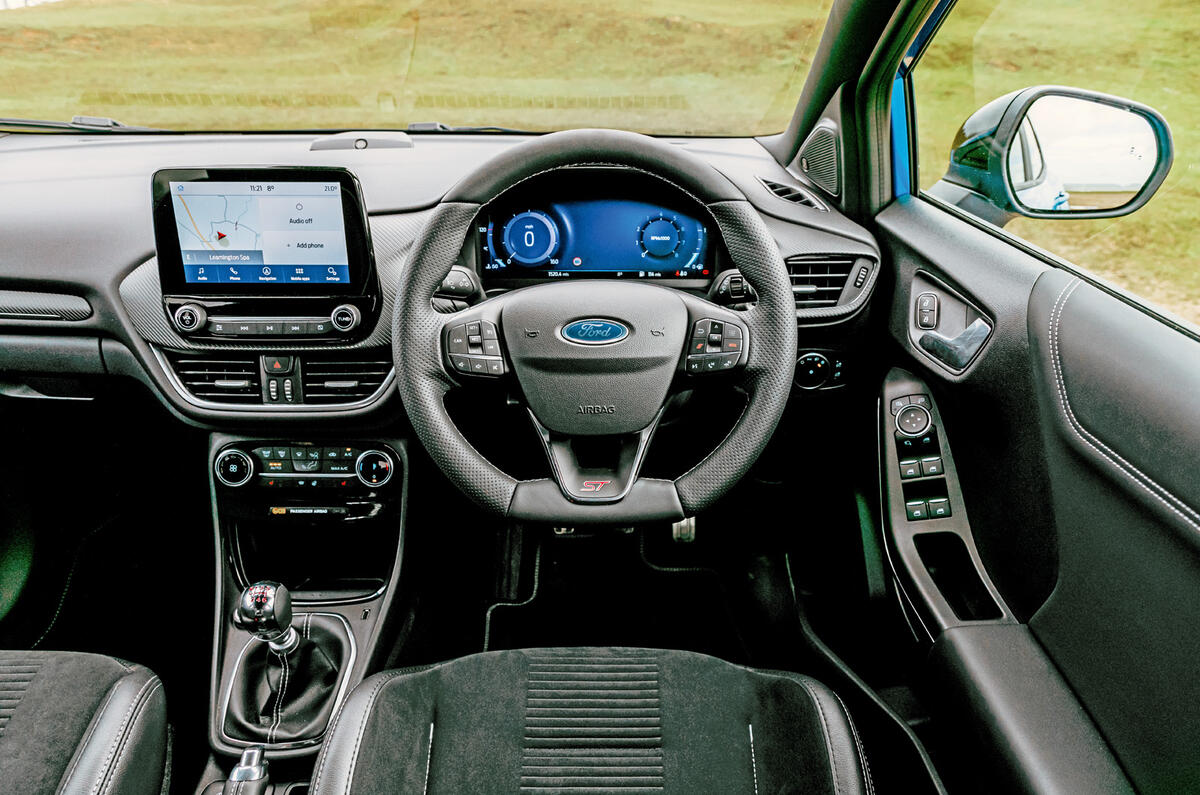In the 1990s a small coupé, today a small SUV: the Ford Puma is yet another sporty car revived as a much more utilitarian product. It’s not the first and, judging by the likes of the Ford Kuga and Mustang Mach-E, it won’t be the last.
Putting thoughts about its name to one side, the modern Puma is an outstanding crossover. Introduced in 2019 and based on the excellent Ford Fiesta supermini, it offers a punchy yet frugal turbocharged 1.0-litre petrol engine with 123bhp or 153bhp.
Mild-hybrid technology (cheekily badged Hybrid) is applied to both variants of the three-pot, although at first it wasn’t standard on the lesser-powered one, so keep that in mind when hunting around. The Ford Puuma ST arrived last year with the 197bhp 1.5-litre three-cylinder turbo engine from the Fiesta ST.
As well as its extra potency, which enables a 0-62mph time of 6.7sec, the handling is also sharper. That’s not to say that the regular Ford Puma isn’t fun to drive, because it very much is. In fact, it’s the best compact SUV for keen drivers, feeling agile, balanced and precise yet all the while remaining comfy.
Every version gets front-wheel drive and a six-speed manual gearbox as standard, although a seven-speed automatic is available. Running costs shouldn’t be too much to stomach, as even the hot Puma ST averages a respectable 41.5mpg on the WLTP test. Both versions of the 1.0 Ecoboost Hybrid, meanwhile, average 50.4mpg. Trim levels range from Titanium to ST-Line X Vignale. Titanium trim gets you 17in alloy wheels, automatic lights and wipers, climate control and cruise control, while the range-topper gets leather seats (heated in the front), a heated leather steering wheel and keyless entry.
The Puma’s attractive interior has some pleasingly squidgy surfaces on the dashboard and on the doors. It’s spacious, too, providing ample room for most adults up front and at the rear, while the driving position is spot on.
You can fit six carry-on suitcases in the boot, and lifting up the floor reveals a well that can swallow a further two. If you’re an outdoorsy type, it’s worth knowing that this Megabox features a drain plug, too, thereby making it easy to clean.
Around £18,000 should get you into a year-old 123bhp Ecoboost in Titanium trim. That’s a good saving over £20,745, its price when new. Expect a 2021 model to set you back upwards of £20,000, while ST-Line X Vignale examples go for around £23,000. If you want a Puma ST, you will need a budget of at least £27,000
BUYER BEWARE
Performance The mild hybrid version has quite a sensitive stop-start function that can require you to move the gearlever to neutral and back into gear before it'll fire up.
Body Check the underside for scratches and scrapes. Where fitted, check the operation of the occasionally erratic automatic tailgate.
Interior There are some low-rent plastics here so check they're not too badly marked or even broken. Make sure all aspects of the infotainment system work (the touchscreen can be lethargic) and that you can get on with the outdated-looking sat nav graphics. Look for water leaks and check the rubber door seals are secure. Make sure the flimsy load cover isn't damaged.
Need to know
Standard on every Puma is an 8.0in touchscreen infotainment system with a DAB radio, sat-nav, a couple of USB ports and a wireless charging pad for smartphones.
In the middle of the trim line-up is ST-Line, which gets you sportier styling over Titanium and swaps the conventional dials for a 12.3in digital display. ST-Line X then adds climate control, 18in alloys, tinted rear windows, part-leather seats and a Bang & Olfusen stereo.
For road tax, the current flat rate of £155 per year applies to every Puma. Unfortunately, the mild-hybrid versions don’t qualify for the £10 annual discount that owners of full hybrids enjoy.
Our pick
1.0 Ecoboost Hybrid 155
Given that both the Ecoboost 125 and 155 go for similar money, we would opt for the more powerful variant. That way you get an engine with plenty of grunt and, thanks to the mild- hybrid system, low running costs.
Wild card
1.5 Ecoboost ST
If you want your family car to be fun, this is the Puma to go for, as it feels very quick, sharp and agile from behind the wheel. Find one fitted with the Performance Pack for some worthwhile extra goodies, including a limited-slip differential.
Ones we found
2020 Puma 1.0 Ecoboost 125 Titanium, 6000 miles, £18,810
2020 Puma 1.0 Ecoboost 155 ST-Line X Vignale, 10,000 miles, £24,495
2021 Puma 1.5 Ecoboost ST Perf’ce Pack, 1500 miles, £27,799
Oliver Young
READ MORE
Top 10 best compact crossovers 2021
Nearly new buying guide: Peugeot 5008
Top 10: used cars everyone should own once











Add your comment